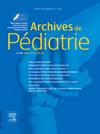Uncorrected ametropia in children with limited access to ocular health care
IF 1.3
4区 医学
Q3 PEDIATRICS
引用次数: 0
Abstract
Introduction
The primary objective of this study is to describe the refractive needs of vulnerable children according to their social security status. The secondary objective of this study is to describe the types of ametropia in this population of children with limited access to ocular health care.
Methods
Children with limited access to ocular health care were recruited. Their social security status was assessed as well as their need for optical correction. Children received an orthoptic and ophthalmological examination. The ametropia thresholds requiring optical correction were defined as follows: hyperopia if spherical equivalent (SE) ≥ 3D before 6 years, ≥ 2.25 D between 6 and 12 years, ≥ 1.5 D from 12 years onwards; myopia if SE ≤ 0.5 D; astigmatism if cylinder C ≥ 1D; anisometropia if sphere difference between both eyes ≥ 1D.
Results
Out of 83 planned patients, 60 children turned up. 51 files for children aged 1 to 14 years old were analysed. 63.2 % of children without social security required an optical correction, compared with 65.6 % of children receiving State Medical Aid (SMA) and 66.7 % of children receiving Universal Health Protection (UHP). Out of 102 eyes, SE was hypermetropic in 56.9 % of cases, myopic in 21.6 % of cases; astigmatism was present in 60.8 % of cases. Anisometropia was assessed in 27.5 % of cases. 33 children out of 51 (64.7 %) required correction with glasses.
Discussion and Conclusion
Children benefiting from SMA or UHP have similar refractive needs than children without social security, and probably greater than those of the general population. In our population there is two-thirds of patients with ametropia requiring optical correction; most of these children did not initially wear glasses, which suggests that access to ophthalmic and optical care is more difficult for vulnerable children.
获得眼科保健机会有限的儿童的未矫正屈光不正
本研究的主要目的是根据弱势儿童的社会保障状况来描述他们的屈光需求。本研究的次要目的是描述屈光不正的类型在这一人群的儿童获得有限的眼科保健。方法:招募获得眼科保健机会有限的儿童。评估了他们的社会保障状况以及他们对光学校正的需求。儿童接受了正视镜和眼科检查。需要光学校正的屈光不正阈值定义如下:6岁前球面等效(SE)≥3D远视,6 - 12岁≥2.25 D, 12岁以后≥1.5 D;SE≤0.5 D为近视;柱体C≥1D散光;双眼球差≥1D。结果:在83例计划患者中,有60名儿童出现。对51份1至14岁儿童的档案进行了分析。63.2%没有社会保障的儿童需要进行视力矫正,而接受国家医疗援助的儿童和接受全民健康保护的儿童的这一比例分别为65.6%和66.7%。102只眼中SE远视占56.9%,近视占21.6%;60.8%的病例存在散光。27.5%的病例被评估为屈光参差。51名儿童中有33名(64.7%)需要配戴眼镜进行矫正。讨论和结论:受益于SMA或UHP的儿童与没有社会保障的儿童有相似的屈光需求,并且可能大于一般人群。在我们的人群中有三分之二的屈光不正患者需要光学矫正;这些儿童中的大多数最初都没有戴眼镜,这表明弱势儿童获得眼科和光学护理更加困难。
本文章由计算机程序翻译,如有差异,请以英文原文为准。
求助全文
约1分钟内获得全文
求助全文
来源期刊

Archives De Pediatrie
医学-小儿科
CiteScore
2.80
自引率
5.60%
发文量
106
审稿时长
24.1 weeks
期刊介绍:
Archives de Pédiatrie publishes in English original Research papers, Review articles, Short communications, Practice guidelines, Editorials and Letters in all fields relevant to pediatrics.
Eight issues of Archives de Pédiatrie are released annually, as well as supplementary and special editions to complete these regular issues.
All manuscripts submitted to the journal are subjected to peer review by international experts, and must:
Be written in excellent English, clear and easy to understand, precise and concise;
Bring new, interesting, valid information - and improve clinical care or guide future research;
Be solely the work of the author(s) stated;
Not have been previously published elsewhere and not be under consideration by another journal;
Be in accordance with the journal''s Guide for Authors'' instructions: manuscripts that fail to comply with these rules may be returned to the authors without being reviewed.
Under no circumstances does the journal guarantee publication before the editorial board makes its final decision.
Archives de Pédiatrie is the official publication of the French Society of Pediatrics.
 求助内容:
求助内容: 应助结果提醒方式:
应助结果提醒方式:


